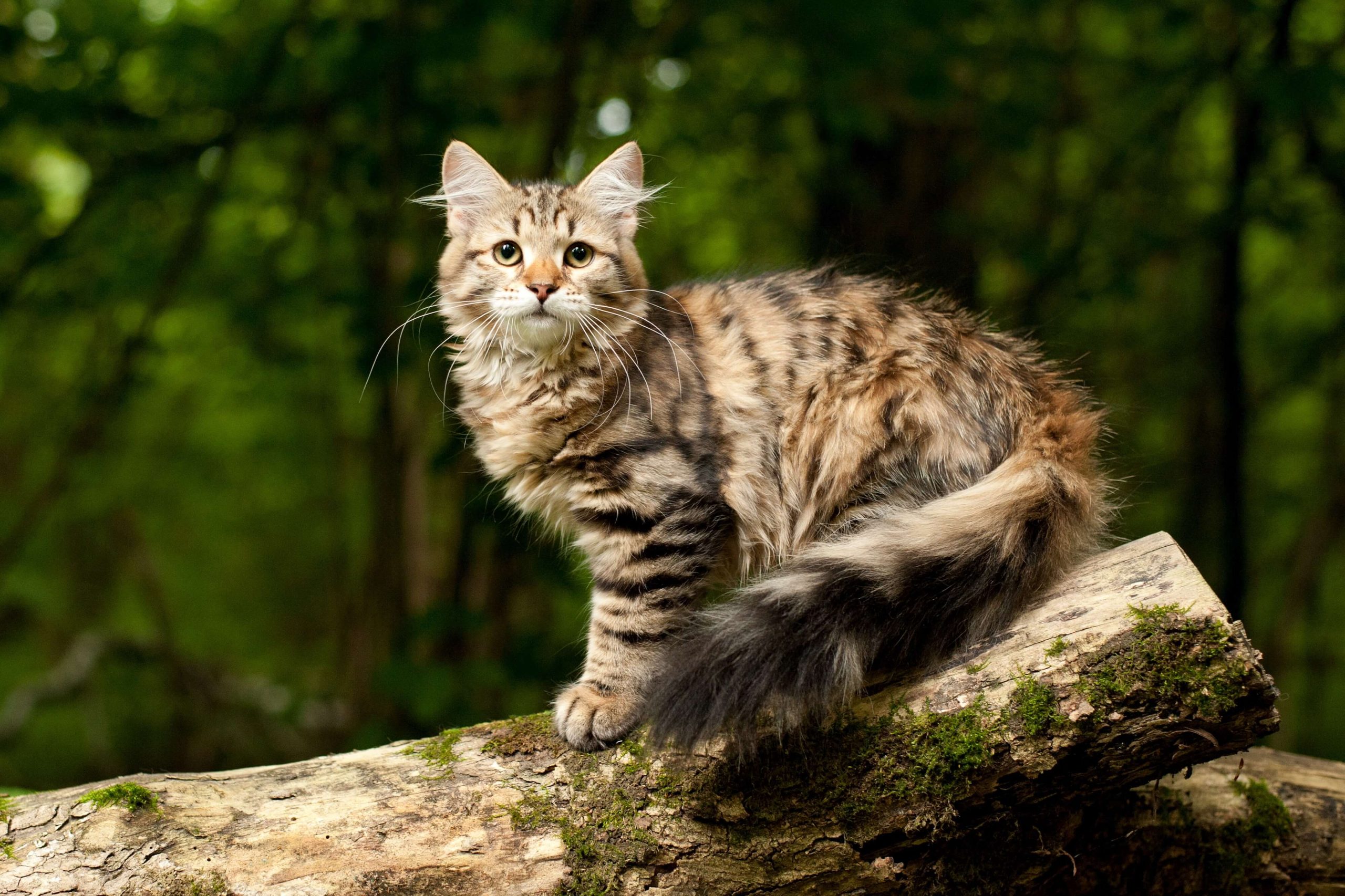The Siberian cat is a semi-long-haired domestic cat from Russia that was created without any breeding effort. In the profile, you get all information about the history, the character, and the attitude of the original forest cat.
History and Origin of the Siberian Cat
The Siberian cat has been known as a domestic cat in Russia for hundreds of years under the name Sibirskaya Koschka. It was created naturally without any specific breeding efforts, and as a natural breed, it is one of the forest cats. Little is known about the ancestors of the Siberian. The first long-haired cats from the Soviet Union appeared at an 1871 exhibition in London. Purposeful breeding of the Siberian Forest Cat began in Russia in the 1970s.
The cats probably came to the GDR through workers who worked in Siberia. A first standard was established there in 1987 and cats were presented at exhibitions. Only after the collapse of the Soviet Union did it begin to spread to the West and was officially recognized as the Siberian cat in 1991. Since then, the breed has spread around the world and is a popular house cat for families.

Essence and Character
The character of the Siberian cat is characterized by a good mixture of affection and natural wildness. On the one hand, the forest cat is rather original and therefore an excellent hunter. On the other hand, they need their daily pats and are very people-oriented. The agile cat is interested in everything that is happening around them and has a strong urge to move. You definitely won’t get bored with a Siberian cat, because the cats don’t like to lie around lazily. The social four-legged friends need contact with other cats and do not like to be alone at home. In general, they react stressed to unfamiliar situations and need time to get used to them. Once you get used to dogs and other pets, this is not a problem either.
The Appearance of the Siberian Cat
The Siberian cat is characterized by a very dense, water-repellent fur that keeps it warm and dry even in the Siberian winter. In winter, the cats form a conspicuous collar around their neck and chest and particularly plush fur on their hind legs. The large, rounded paws have “snowshoes” between the toes. Also striking are the so-called “lynx brushes”, which give some representatives of the breed a wild appearance. The large, slightly slanting eyes are usually either green or amber. Only the Pointed Siberian cat has blue eyes. The muscular cats are heavy and only fully grown at the age of three. Female cats can weigh three to six kilos, while males can even weigh up to nine kilos.
Attitude and Care
Outdoor cat or indoor cat?
The Siberian cat is a nature-loving breed that spends a lot of time outside when allowed to roam. The independent cat loves to spend hours roaming through nature, hunting, and exploring the environment. A good hunter, the Siberian cat often brings home its prey. Disposing of dead birds and mice is not for everyone and should be considered before purchasing. If you live purely as an apartment, a large apartment with a stable scratching post is part of the minimum equipment. A secure garden where the cat can live out its urge to move would be ideal. With the right precautions, your cat can live happily ever after.
How much activity does the Siberian cat need?
As an active breed, the Siberian cat needs a lot of space to play and hunt. Independent cats prefer to occupy themselves and explore their surroundings. Of course, they still like it, especially when they are young if you keep them busy with a fishing rod or mice. Intelligence toys for cats also make good use of the velvet paws and promote their intelligence. She also likes to play with other dogs and should therefore not be kept alone. As one of the few cats, Siberians like to play with water and will also be occupied with a dripping faucet for a long time.
Grooming and feeding

You should get the Siberian cat used to grooming at an early age so that it is comfortable for both parties. The forest cat cannot take care of the dense winter fur on its own. She needs your support. Weekly combing helps prevent tangles during the coat change and strengthens the relationship with your house cat. In summer, the Siberian cat does not need any additional grooming. The overall maintenance effort is therefore a lot less than for the Persian cat. When it comes to nutrition, the breed is not particularly difficult and, like any other breed, can eat conventional cat food. Due to their high urge to move, they have a high energy requirement and rarely tend to be overweight.
Acquiring a Siberian cat
Before purchasing a Siberian cat, it is important to find a reputable breeder. This is the best way to get a purebred and healthy kitten. In addition, the cats are usually already housebroken, vaccinated, and chipped. Ideally, also look at the parent animals before you buy them. The price of a Siberian cat is between 700 and 1,000 euros. The price mainly depends on whether you are buying a hobby cat or a breeding cat.